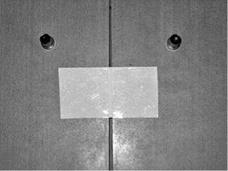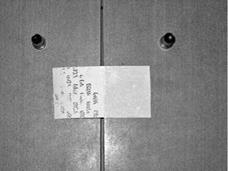From TV crime thrillers, we are all familiar with the paper sealing labels that detectives use to secure doors against unauthorized opening. These are bonded to the door and the frame and will tear when the door is opened.
More sensitive tamper-indicating labels which signal that the seal has been tampered with by an attempt to remove it or to open the door, are becoming increasingly popular (Figure 8.78). Here, when only slightly disturbed or peeled off, the strip produces an irreversible VOID message.
Tamper-indicating labels are, for example, multilayer strips that have a thin transparent upper layer, which is coated on one side with an adhesion promoter,
|
|
|
Figure 8.78 Tamper-indicating label at a cabinet door; after application (top), after opening the right-hand door (bottom). |
followed by a thin pigmented intermediate layer, and finally a lower layer with a pressure-sensitive acrylic adhesive that is provided with an easily removable protective layer. In the area of the VOID message, the transparent layer is coated with an anti-adhesion layer by means of a special printing method prior to application of the adhesion promoter. When the bonded strip is disrupted, or an attempt is made to remove it, the bonding will detach in the area of the anti-adhesion layer first. The pigmented layer and the acrylic adhesive will remain on the item to be protected. The transparent upper layer exposes the VOID message, which appears on the item with the pigmented layer. Translucent colors can be printed on the noncoated side of the transparent upper layer.
This type of tamper-indicating labels is used not only for sealing doors but also as packaging security devices for sensitive products. Similar systems are employed against counterfeit.
Care must be taken not to damage the tamper-indicating layer when removing the protective layer. This applies particularly to the sealing of doors, which is done manually under conditions that maybe difficult to control. Furthermore, the bonding area should be thoroughly cleaned to enable the acrylic layer to adhere well to the surface and allow the VOID message to be exposed when attempts are made to break the seal.
 12 января, 2016
12 января, 2016  Pokraskin
Pokraskin 

 Опубликовано в рубрике
Опубликовано в рубрике 